
by Chris Hargreaves | Apr 23, 2024 | Carbon Sustainability, Energy, Energy Attribute Certificates (EAC's), News, Waste
Tired of navigating the murky waters of utility management alone? Look no further! In this comprehensive guide, our experts have compiled your most frequently asked questions, and provided you with their expert insights and responses.
Whether you’re curious about energy market trends, utility contract terms and procurement, or sustainability options, we’ve got you covered! Join us as we unlock the mysteries of utility management and empower you with the information you need to make informed decisions for your business.
Utilities Management Questions
Should our new utility contract agreement be shorter or longer term?
The optimal term for your electricity, natural gas, LPG and trade waste procurement agreement depends on various factors, including market conditions and your business objectives. Longer-term contracts can provide price stability and potentially lower rates, while shorter-term agreements offer flexibility and the ability to adapt to changing market dynamics. Total Utilities offers a range of contract terms and provides recommendations tailored to your specific needs.
Should I let my utility contract expire and see what happens in the market?
It is generally not advisable to allow your utility contract to expire without securing a new agreement, as this can expose your business to pricing which may be significantly higher. Waste contracts are often very one sided in favour of the supplier. It is important to ensure that notice is given within the applicable timeframes should rollover clauses exist. Otherwise you could be stuck for a new term on conditions you don’t like. Instead, Total Utilities recommends exploring short-term contracts that provide pricing cover while allowing flexibility to adapt to market changes.
Why should we bother tracking utility costs if we’re in a fixed-term contract?
Monitoring utility usage and costs serves several crucial purposes:
- Identifying areas for potential savings
- Predicting future utility needs
- Improving operational processes and reducing overhead expenses
- Preventing wastage, including excessive utility usage
- Establishing valuable metrics for communicating utility usage throughout your organisation
- Making informed business decisions based on precise and accurate reporting.
Why should I use Total Utilities?
Total Utilities specialises in the energy and gas procurement industry, leveraging over two decades of experience. Completing around 300 market reviews each year, we closely monitor market movements, government policies, and industry trends to provide informed and strategic advice. Our range of services is designed to help businesses optimise their utility costs while ensuring reliable and efficient utility procurement.
What will it cost me?
We offer a range of fee options tailored to your business needs, including annual fees and fixed fees. These fee structures allow you to spread the cost of our services over the term of your contract. Additionally, we provide special pricing for bundled services, ensuring cost-effective solutions for your utility procurement needs.
Energy specific questions
What is happening in the gas market?
The gas market is experiencing a decline in production. Since the ban on offshore oil and gas exploration in 2016, investment in domestic gas infrastructure has dwindled. This is coupled with the sustained decline in production as fields exhaust their resources. According to forecasts by MBIE, gas production is expected to decrease by 30% by the year 2030. This trend has significant implications for businesses reliant on gas, as it may lead to changes in pricing and availability. Short term, market issues are not going away and it remains to be seen whether the new government will look at importing Liquid Natural Gas (LNG) or fast-tracking hydrogen production.
Why aren’t gas suppliers bidding as aggressively as before?
The decrease in gas production and the exit of gas retailers from the market have contributed to a shift in bidding dynamics. Gas suppliers may be more selective in their bidding strategies due to supply constraints and changing market conditions. Additionally, the demand for gas for electricity generation and other purposes further influences bidding behaviour.
Why are energy prices rising in a predominantly hydrogeneration-based market?
Despite being predominantly hydrogeneration-based, energy prices are influenced by the overall cost of generation, including gas and coal. When gas and coal generation is required to meet demand, it can drive up the market price of electricity. Additionally, factors such as emissions trading scheme (ETS) costs contribute to price increases.
Sustainability Questions
How do we reduce our usage and carbon emissions?
Total Utilities recommends a proactive approach to reducing energy usage and carbon emissions. This involves measuring current consumption levels, identifying areas for improvement, and implementing energy efficiency measures. Reduction measures can be prioritised from low cost high impact to high cost low impact. This allows your business to plan and budget for changes that need to be made, ensuring that over time you make improvements and become more commercially and environmentally sustainable.
Is solar a viable option?
The viability of solar energy depends on various factors, including your organisation’s internal rate of return (IRR) and sustainability goals. With current energy pricing, onsite solar installations typically offer a return on investment (ROI) within approximately seven years. However, successful implementation of solar projects also requires careful consideration of factors such as site suitability, financing options, and regulatory requirements, all of which we can advise upon.
Are renewable infrastructures being built?
Yes, there are ongoing efforts to develop renewable energy infrastructure, but progress is often hindered by regulatory challenges, environmental considerations, and supply chain issues. The process of commissioning new renewable generators can be lengthy, typically taking around nine years from planning to completion.
Market Dynamics Questions
When will electricity and gas markets stabilise?
Market stabilisation in the electricity sector is anticipated around 2027/2028, contingent upon significant infrastructure investments and regulatory developments. However, It is likely that natural gas markets will get worse before they get better, if they ever do. Since the ban on offshore exploration, much of our industry expertise has been relocated offshore. Bringing that knowledge back to NZ will be challenging unless the sector has a 10-20-year time horizon for exploration to continue.
Why are price hikes so big?
Factors such as declining gas production and limited electricity generation investment have contributed to significant price increases in the energy market. Additionally, regulatory changes and market dynamics impact pricing, leading to fluctuations and occasional spikes in prices.Waste to landfill pricing has been increasing as New Zealand has limited space in landfill sites. Also government policy has seen increases in the waste levy to incentivise more recycling and less waste ending up in landfill. If you aren’t recycling what you can, you are missing out.
Will utility prices drop?
Forecasts indicate a stabilisation of electricity prices beyond 2027, provided that investments in renewables reduce reliance on coal and gas. However, the timing and extent of price stabilisation depend on various factors, including policy developments, technological advancements, and market dynamics. With the government’s decarbonisation targets we are unlikely to see gas and waste prices falling. The most effective saving is to use less of your utilities where able.
How much can you save me?
Total Utilities works diligently to secure competitive pricing for our clients in a rising market. While we cannot guarantee specific savings, our strategic approach to procurement ensures that your current supplier must compete to retain your business. Additionally, we identify opportunities for cost savings, such as waste reduction, which can lead to significant financial benefits for your organisation.
Industry Insights Questions
How can I manage variable costs?
Total Utilities offers monthly forecasting and budgeting advice to help you manage variable costs effectively. By analysing historical usage data and market trends, we provide insights that enable you to forecast
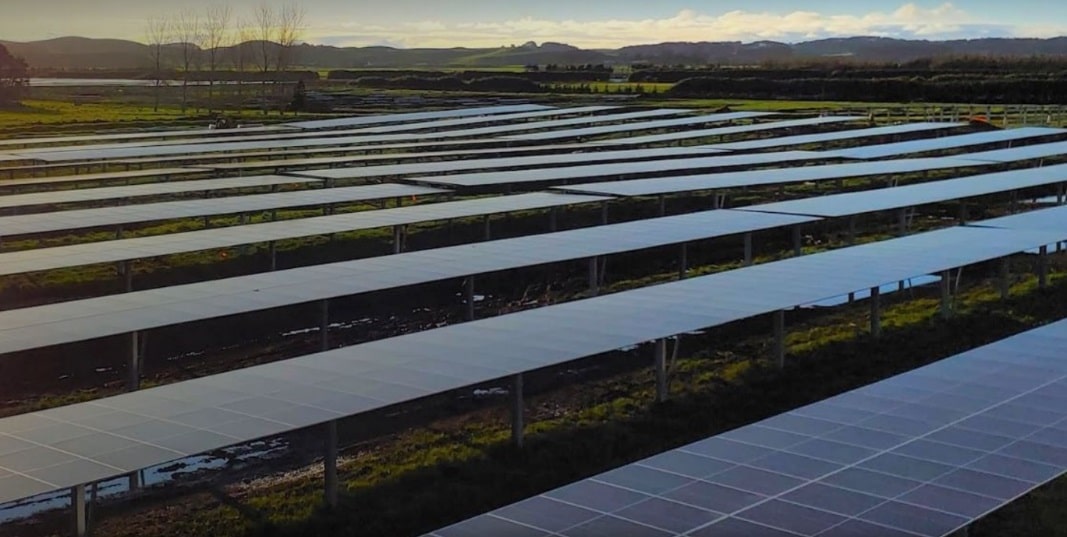
by Chris Hargreaves | Apr 23, 2024 | Carbon Sustainability, Energy, News, Solar Power
New Zealand’s first grid-scale solar generation plant was recently opened in Kaitaia by Lodestone Energy, and Total Utilities was delighted to be invited to the opening for an exclusive first look.
Lodestone Energy, a leading solar company in New Zealand, has launched the country’s first grid scale solar farm, Kohirā, in Kaitaia. They recently celebrated this milestone at the grand opening, and announced having raised a further $55 million for solar farm expansion.
The Kaitaia facility has more than 61,000 solar panels installed, and the farm will generate up to 56 gigawatt hours of electricity annually. At peak output, this can supply all of the Kaitaia region’s electricity requirements.
Pivotal Point in Energy Generation
Gary Holden, Managing Director of Lodestone Energy, said the occasion marked a pivotal point in New Zealand’s electricity market, with the company delivering the first grid-scale solar generation plant.
“As New Zealand’s largest solar installation to date and the first solar farm in New Zealand to bid into the electricity market, this is a crucial step forward in the future of energy generation.
“Many organisations were involved in delivering this project and learnings from Kaitaia are being used in the construction of our other sites, with Edgecumbe close to starting generation and Waiotahe construction on target to be generating by the end of the year.”
The site’s official name Kohirā was gifted by Te Rarawa. Kohirā translates to suncatcher in te reo Māori and reflects how Lodestone harnesses the energy of the sun to generate electricity.
The partnership with local iwi aligns with Lodestone’s commitment to work with tangata whenua to deliver solar projects that empower both the regions in which they operate.
Chris Hargreaves reflects on Lodestone’s solar achievement
Total Utilities’ Director, Chris Hargeaves, says he was honoured to be invited along to the official launch of Kohirā. “The incredible amount of work that went into this project was evident on the day.
“Four years of extremely hard work became a shining light in the Kaitaia region and a first for New Zealand. Our country needs dreamers, and they need doers, and Gary Holden along with the Lodestone team are both.”
Chris explained that Lodestone’s Chief Financial Officer, Chris Jewell, told a great story about how after they initially met with the local Iwi and were told the story of how Maui harnessed the sun, Lodestone bought copies of the book that illustrates the legend.
“When Lodestone visited their suppliers in the UK, China and Australia, they gave away copies of these books to the contacts that they met. One in particular still reads the book to his six year old son, and his son is dead set keen on coming to New Zealand so that he can meet Maui.”
Innovative Design and Sustainable Practices
Additionally, Kohirā boasts an innovative agri-voltaic design meaning the land can be used for both farming and solar energy generation simultaneously. Solar panels are installed above crops or pastures, allowing agricultural activities to continue while generating renewable energy.
This approach maximises land use efficiency and promotes sustainable agricultural practices by combining food production with renewable energy.
Attendees including Chris were lucky enough to see the design first hands – a feature that will be rolled out across other Lodestone solar farms.
The company is currently developing five solar farms in the North Island, and has confirmed plans for three more in the South Island.
- To find out more information about Total Utilities’ expertise in solar, renewable energy and sustainability, get in touch for a free consultation.
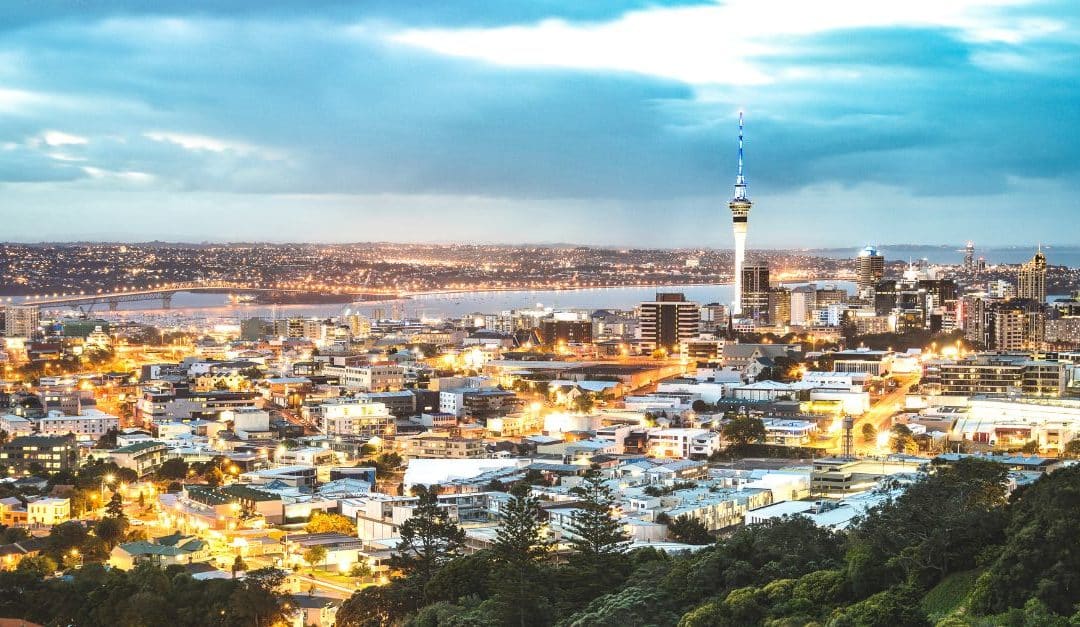
by Chris Hargreaves | Apr 23, 2024 | Carbon Sustainability, Case Studies, Energy
Discover how Total Utilities’ innovative ‘Utility Insights’ service sparked remarkable transformations in four unique settings. From schools to industrial plants, food manufacturers to national retail chains, witness the journey of overcoming challenges and achieving success through proactive utility management.
High School Aces Utility Management Test with Total Utilities
Challenge:
A local high school’s rising utility costs were putting a strain on their budget. Additionally, waste handling expenses were escalating, further exacerbating financial pressures.
Solution:
Total Utilities stepped in with their Utility Insights service, offering a comprehensive solution to address the school’s utility management challenges. By collaborating closely with the school, Total Utilities provided proactive budgeting advice and identified opportunities for cost savings.
Result:
Through Total Utilities’ proactive approach, the high school achieved remarkable success, saving $40,000 annually (20%) in waste handling costs, offsetting rising expenses. Additionally, Total Utilities’ budgeting advice enabled planning for electricity and gas contract renewals, optimising budget and ensuring sustainability.
Overall, Total Utilities’ Utility Insights empowered the high school to overcome challenges, achieve savings, and pave the way for continued success.
Industrial Plant’s $70k Savings Story
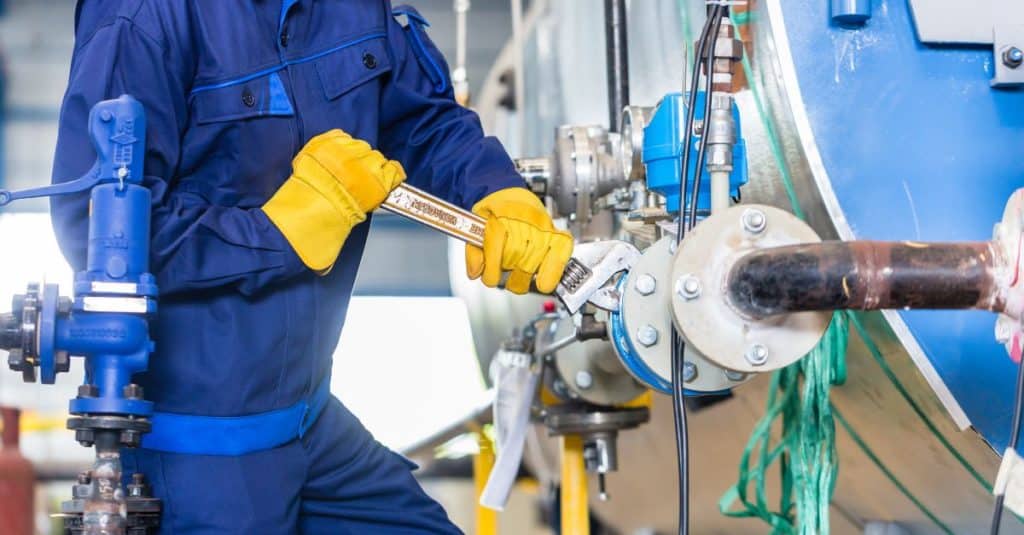 Challenge:
Challenge:
Utility Insights reporting on electricity cost and consumption for this industrial client revealed an alarming discovery: over $70k of reactive charges per year were being incurred. These penalty charges resulted in a significant financial burden for the plant.
Solution:
Total Utilities stepped in to address the challenge. By implementing power factor correction equipment to improve electrical efficiency, we provided a proactive solution to mitigate the reactive charges. Additionally, our system ensured that if power factor charges were incurred again, the correction equipment could be serviced promptly, avoiding any unnecessary costs.
Result:
Through Total Utilities’ intervention, the industrial plant saw remarkable results. The installation of power factor correction equipment led to a substantial reduction in reactive charges, saving the plant over $70k per year. The plant can now effectively manage power factor charges and prevent any future financial losses, ensuring long-term cost savings and operational efficiency.
Total Utilities’ Data Dive for Food Manufacturer Improves Efficiency, Cuts Costs
Challenge:
A food manufacturing plant faced the challenge of understanding and optimising energy consumption across its processing plants. Without detailed production data, it was challenging to benchmark electricity and gas usage efficiency accurately.
Solution:
Total Utilities implemented a solution by adding production data tracking at each processing plant. This provided deeper analytics for benchmarking energy consumption efficiency. By integrating production data with utility usage, our system enabled the customer to clearly visualise how energy was used in relation to production outputs.
Result:
With Total Utilities’ solution in place, the Food Manufacturing Plant achieved remarkable results. The addition of production data allowed for the creation of Key Performance Indicators (KPIs) at each plant, enabling better tracking and management of energy usage.
Furthermore, cross-site benchmarking within each business unit became possible, facilitating insights and improvements across the organisation. Through Total Utilities’ innovative approach, our client optimised energy efficiency, reduced costs, and paved the way for continued success in sustainable manufacturing.
Revolutionising Retail Efficiency for National Retail Chain
 Challenge:
Challenge:
A national retail chain client with 45 locations across New Zealand faced the challenge of managing out-of-hours energy consumption effectively. Ten stores were identified as having significant energy usage outside of operating hours, resulting in excessive costs exceeding $140,000 per year.
Solution:
Total Utilities implemented a solution by resetting Heating, Ventilation, and Air Conditioning (HVAC) controls to ensure energy usage aligned with operating hours. This proactive approach aimed to optimise energy consumption and reduce unnecessary costs associated with out-of-hours usage.
Result:
With Total Utilities’ intervention, our client achieved significant savings and efficiency improvements. By resetting HVAC controls, energy consumption during non-operational hours was minimised, leading to substantial cost reductions. This strategic approach not only helped the chain save money but also contributed to its sustainability efforts by reducing unnecessary energy waste.

by Chris Hargreaves | Mar 14, 2024 | Carbon Sustainability, Energy, News
Prepare for a ride into the amazing world of energy trivia with our top 10 list of mind-boggling facts and trivia. From phantom energy to compressed air energy storage – take a glimpse into the fascinating forces that power our world:
- Phantom energy – the sneaky culprit: Did you know that even when your business devices are turned off, they might still be sipping on energy? This phenomenon, known as ‘phantom’ or ‘vampire’ energy usage, contributes to about 10% of residential electricity consumption. For businesses, this translates into substantial hidden costs. Unplug and save to maximise your energy efficiency and reduce operational expenses. Why not take a look at our case study featuring a well-known NZ retail chain client who achieved significant cost and carbon savings with our help through intelligent energy insights.
- The sun’s incredible power hour: Imagine this: in just an hour and a half, the amount of sunlight that reaches the Earth’s surface could meet global energy demand for an entire year. Solar energy holds untapped potential that could revolutionise your business’s energy landscape. Just last month, the first grid-scale solar farm operated by Lodestone Energy opened in Kaitaia with an output large enough to power over 6,000 homes.
- Renewable reign – a 2020 triumph: A remarkable shift occurred in 2020 when renewable energy sources claimed over 80% of the new electricity capacity added worldwide, surpassing the once-dominant fossil fuels. The dawn of a sustainable era is upon us, enabling business owners to align with eco-friendly practices.
- Hydroelectric prowess – Nature’s efficiency: Hydroelectric power plants are true champions in efficiency, converting approximately 90% of the energy from falling water into electricity. In a typical year, 65% of NZ’s energy is produced from hydroelectric power.
- Golmud Solar Park – packing a solar punch: China’s Golmud Solar Park reigns as the world’s largest solar farm as of 2024, boasting 2.8 GW of solar capacity. With nearly seven million panels soaking up the sun, it’s a powerhouse of clean energy.
- LEDs lighting the way: Embrace the brilliance of LED light bulbs, champions of energy efficiency. These marvels use up to 80% less energy than traditional incandescent bulbs and can last an astonishing 25 times longer, illuminating the path to sustainability and cost savings for your business.
- Solar cell evolution – from 6% to 20% plus efficiency: Journey back to 1954 when Bell Labs developed the first practical solar cell with an efficiency of around 6%. Fast forward to today, where cutting-edge solar cells exceed 20% efficiency, transforming sunlight into a potent energy source for businesses looking to harness the power of the sun.
- Compressed air’s elastic energy storage: Enter the realm of compressed air energy storage (CAES) systems, where excess energy is used to compress air stored in vast underground caverns. When electricity demand arises, the released compressed air generates power, showcasing the elasticity of energy storage.
- Geothermal genesis in Italy: Italy proudly hosts the world’s first geothermal power plant, built in Larderello in 1904. Geothermal energy taps into the Earth’s internal heat to generate electricity, providing a sustainable alternative.
- Energy star’s bright certification: Discover the efficiency of energy star-certified appliances, wielding the power of up to 50% more energy efficiency compared to their non-certified counterparts. For businesses, this certification signifies a commitment to energy-conscious choices and operational savings.
Want to learn more about increasing sustainability, reducing costs, and improving efficiency? Get in touch with our experts at Total Utilities today.

by Chris Hargreaves | Jan 23, 2024 | Carbon Sustainability, Energy, News
As businesses step into the new year, the focus inevitably turns to financial goals, and one crucial aspect of this is optimising utility costs.
So, let’s explore just five practical steps you can take to save on utilities, while simultaneously promoting efficiency and sustainability:
Step 1: Comprehensive utility audit
Embark on the journey to optimised utility costs by conducting a detailed assessment of your business’s consumption patterns through a comprehensive utility audit. This thorough examination allows you to analyse current usage, pinpoint inefficiencies, and set realistic targets based on your baseline consumption.
As a strategic partner, Total Utilities provides invaluable support with advanced reporting tools, offering a deeper understanding of your utility costs. Our commitment extends beyond identification – we strive to empower your business with insights that form the foundation for targeted and sustainable solutions, ensuring lasting benefits in utility optimisation.
Step 2: Implement energy-efficient practices
After establishing your baseline, the next step is adopting energy-efficient technologies and practices – for example, upgrading to LED lighting, installing smart thermostats, and using energy-efficient appliances.
Strategies like off-peak energy usage can also lead to significant savings. Taking advantage of lower rates during off-peak hours contributes not only to cost efficiency but also supports a sustainable approach to energy consumption.
Step 3. Waste management & reduction
Conducting a waste audit is an important step in fostering sustainable business practices, identifying opportunities for waste reduction and recycling.
Implementing strategies like composting and material reuse post-audit contributes to significant waste reduction, aligning with eco-friendly practices and often resulting in both environmental benefits and cost savings.
Educating employees on sustainable waste practices ensures the ongoing success of these initiatives, fostering a culture of responsibility and active participation in environmental stewardship.
Step 4. Strategic procurement and RFP management
Optimising utility costs involves a strategic approach and Total Utilities can assess your current providers and explore competitive proposals through a well-managed Request for Proposal (RFP) process. It’s crucial to prioritise providers that offer both competitive rates and sustainable solutions.
Ensuring that procurement decisions align with long-term sustainability and cost-saving goals is essential. A commitment to fiscal prudence and a sustainable, forward-thinking ethos results in responsible long-term utility management. Making strategic procurement choices not only contributes to financial efficiency but also establishes a positive, enduring impact on the environment.
Step 5. Invest in renewable energy and low carbon solutions
Begin by exploring the integration of renewable energy sources, such as solar or wind power, strategically aligning with both environmental conservation and financial objectives. In tandem, direct investments towards low carbon solutions to actively contribute to a greener future. Simultaneously, leverage cutting-edge technology and innovations to minimise reliance on high-carbon resources.
This strategic step extends beyond mere cost considerations, actively supporting environmental goals and embodying a forward-thinking approach to sustainable utility management. By embracing renewable energy and low carbon solutions, businesses not only pave the way for financial efficiency, but also make a lasting positive impact on the environment. This dual commitment reflects a conscientious and forward-looking strategy in the pursuit of optimal utility management.
Smart, efficient, sustainable choices with Total Utilities
With Total Utilities by your side, steps to manage your utility costs become more manageable. Our advanced reporting tools and expertise in waste management, energy efficiency, and sustainable solutions ensure that your journey towards financial efficiency aligns seamlessly with your commitment to the environment.
In a nutshell, this isn’t just about saving money. It’s about making smart choices that save you cash and help the planet.
As your business steps into the new year, remember – by making the right choices, you’re creating a future where your success and environmental stewardship go hand in hand.
Find out more:
Start your New Year off on the right foot by contacting us to book a free utility management consultation.
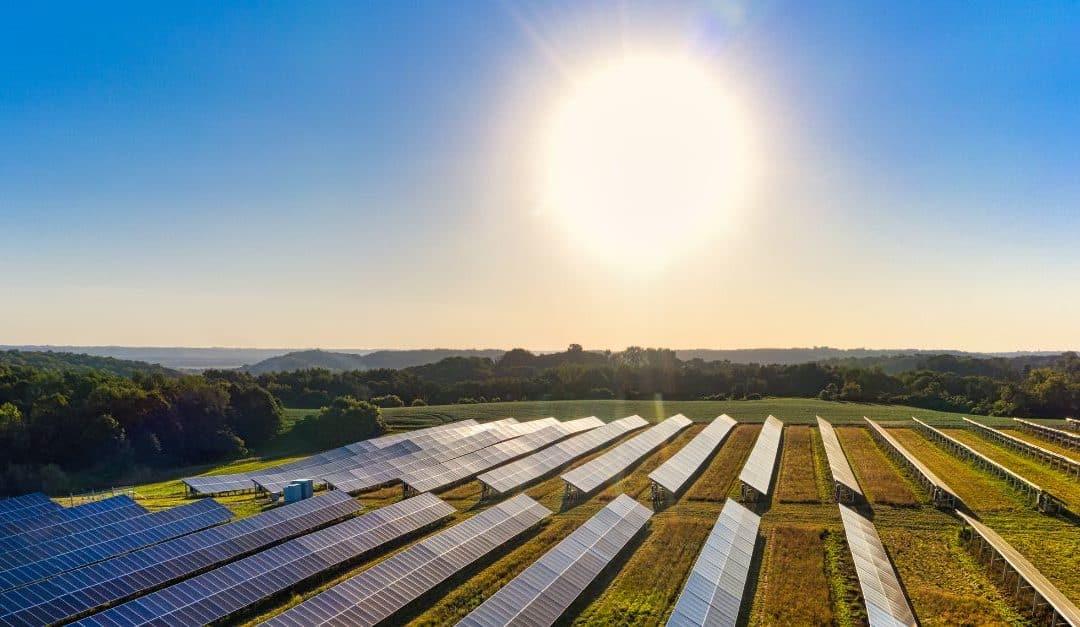
by Chris Hargreaves | Dec 10, 2023 | Carbon Sustainability, Energy, Energy Attribute Certificates (EAC's), News
Contributed by Paul Coster, Founder of EVA Marketplace
Given the need for businesses to slash fossil fuel consumption, part 1 asked the burning question, ‘can backing renewables be both a pragmatic commercial decision and contribute to climate action?’ I then explained that the climate-friendly way for most New Zealand businesses to back renewable energy is through electricity, by both demand response and supporting additional renewable generation.
Here in part 2, I will start by detailing the solutions available to businesses, explain the role played by energy certificates, and then discuss which solutions can have the most impact.
Solutions
Readily available solutions for supporting renewable electricity are shown below. Each of these solutions requires an electricity supply agreement, and some require a power purchase agreement (PPA). See this recent blog post by EVA to learn more about PPAs and how they differ from supply agreements.
Businesses can combine solutions for greater impact, such as having demand response, on-site generation, and a corporate PPA. In all cases, a relationship with an electricity retailer is retained.
1. Demand response
Technology is installed on the business’s site that allows electrical equipment (including battery storage) to respond to changes in the electricity market, such as high prices or plentiful renewable generation.
Use case: industrial facility installing technology to switch between an electric boiler and a thermal (e.g. biomass) boiler to produce steam. The thermal boiler is used during high prices or when the carbon intensity of the grid is high. An example is
Open Country using Simply Energy’s technology.
2. On-site generation
Renewable generation is installed on or near the business’s site. The project is owned by the business, or owned by a developer who agrees to sell the electricity onto the business via an on-site PPA.
3. Corporate PPA
Renewable generation is constructed remotely (‘off-site’). The project is owned by a developer who agrees to sell the electricity to the business via a corporate PPA, helping to financially support their project. The corporate PPA will typically be sleeved (bundled) into the business’s supply agreement.
4. Indirect utility PPA
Renewable generation is constructed off-site. The project is owned by a developer who agrees to sell the electricity onto a retailer via a utility PPA, helping to financially support their project. The retailer on-sells the electricity to the business under similar terms using PPA sleeving (bundling).
5. Project-linked supply
Renewable generation is constructed off-site. The generator agrees to sell the project’s renewable attributes onto a retailer via energy certificates. The retailer passes the certificates onto the business under their electricity supply agreement or another agreement.
Use case: a business that receives energy certificates from a new renewables project under their electricity supply agreement.
Energy certificates
Energy certificates play an essential role for these solutions where renewable electricity is exported into a network. The certificates track renewable attributes for each unit of electricity, avoiding double counting (*1) and reducing the chance of mis-leading claims (*2).
Currently, energy certificates don’t consider the impact of a solution, such as its economic, environmental or social benefits. In New Zealand, issuers of energy certificates are Brave Trace. (NZ-ECs) and Energy Market Services (iRECs). Certified Energy recently announced future plans to add an impact attribute to their certificates.
Impact
In assessing the potential impact of each solution, we’re going to focus on their economic and environmental impact. The social impact of each solution will greatly depend on the approach taken by the project developer (e.g. community involvement and initiatives).
In order to assess potential impact, I considered various factors, including these three key solution characteristics by asking the following questions:
- Additionality: To what extent would the avoided system emissions have occurred in absence of the solution?
- Location: How does the physical location of the solution (on-site or off-site) affect energy cost savings and avoided costs or emissions?
- Timing: How does the timing of the demand response or electricity generation affect energy cost savings and avoided costs or emissions?
A broad brush assessment of each solution’s potential impact, based on NZ’s current market and the evidence I’ve seen, is shown below. In the complex real-world, the impact will vary for each individual solution (or combination of solutions) and, in the case of demand response, how it is operated day-to-day. Discussion of real-world impact is rich and requires its own series of blog posts.
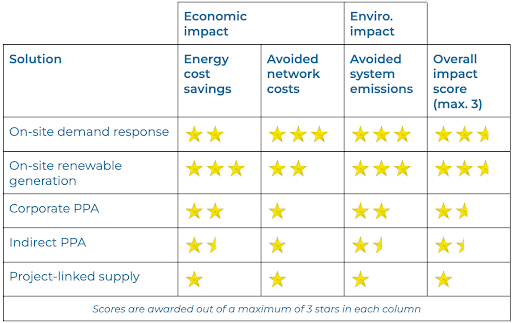
Generally, demand response and on-site generation, particularly when combined, have the highest potential for commercial and climate impact. They’re followed by PPAs, an excellent solution for businesses where on-site solutions aren’t feasible or can’t meet their full electricity needs. Solutions that solely rely on energy certificates, like a project-linked supply, will typically have the lowest impact. Their impact depends on the revenue created by the certificates and how this money is used (businesses should request transparency).
Like part 1, this post is my current thinking, which I hope opens up more discussion about the impact businesses can have on Aotearoa’s clean energy transition.
* References
1. “The GHG emission reductions or removals from the mitigation activity shall not be double counted, i.e., they shall only be counted once towards achieving mitigation targets or goals”, Core Carbon Principles, The Integrity Council
2. Energy certificates can be used to claim lower scope 2 emissions, and are therefore a form of carbon credit or offset. To be high integrity offsets, they should align to The Integrity Council’s Core Carbon Principles.




 Challenge:
Challenge: Challenge:
Challenge:


